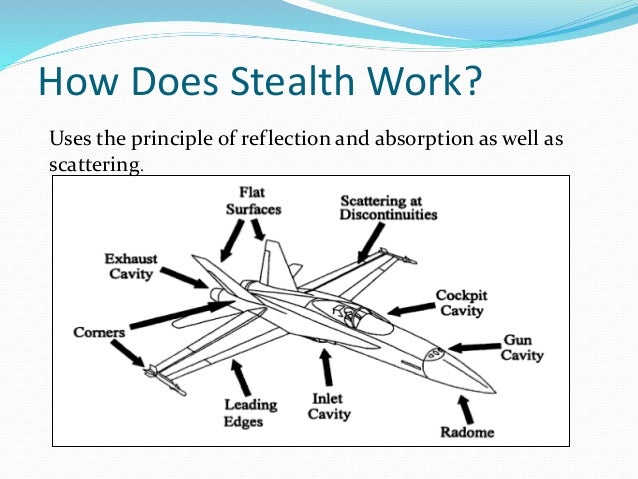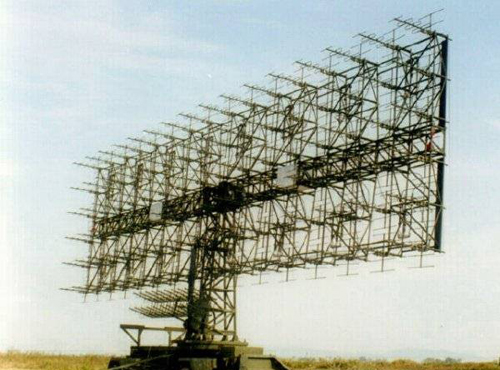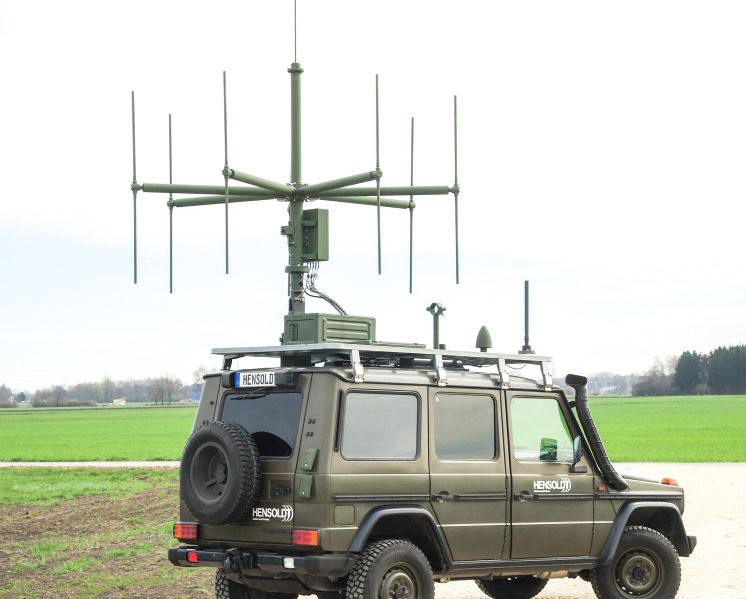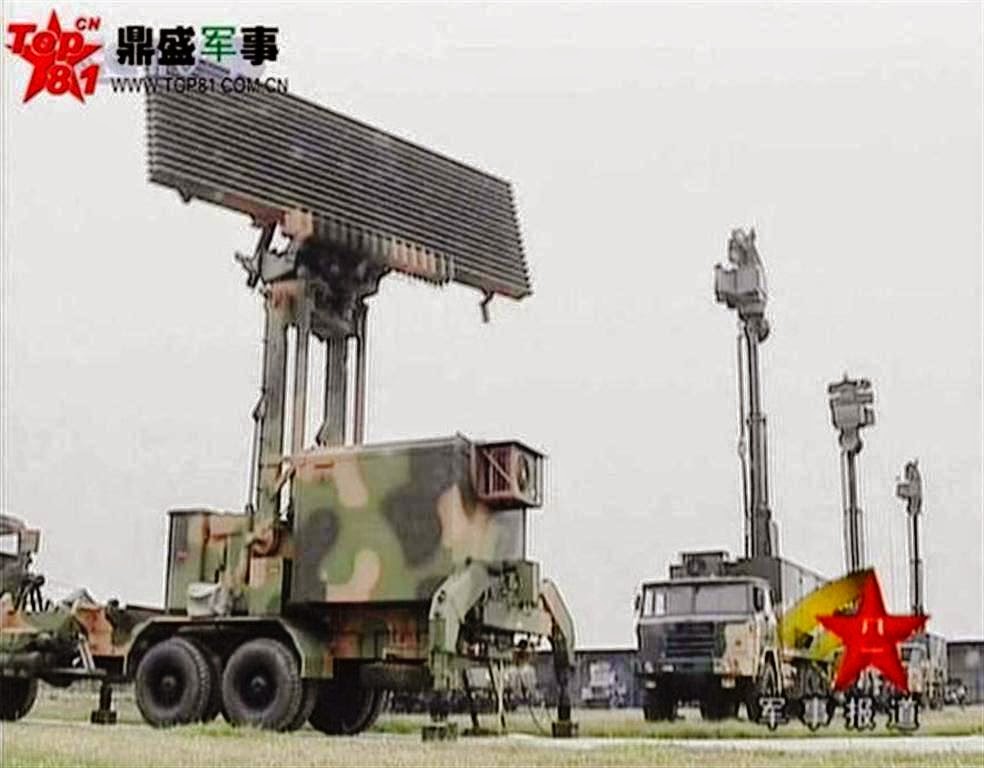Stealth technology has proven to be one of the effective approaches to enhance the survivability of Aircrafts. Aircraft/helicopter designers are making them stealthier by reducing their signatures; viz. visual, aural, infrared (IR), and RADAR cross section. Advancements in stealth technologies, as demonstrated by the very low RCS of stealth aircraft such as F-117, B-2 and F-22, make such targets extremely difficult to detect.

The emergence of stealth however, has made the operational environment of Air defence networks far more challenging and complex over the past decade. Low radar signature for a target means that it is detected and tracked at a shorter distance from radar. As demonstrated in recent wars these threats are not effectively dealt by currently deployed radar networks.
The multistatic radar system has two or more transmitting or receiving antennas with all antennas separated by large distances when compared to the antenna sizes, and working together in a coordinated and integrated way. Stealth targets whose shape is designed to scatter energy in directions away from the monostatic radar may be detected by multistatic radars. One or more receiver antennae will be in such a position to receive the scattered echo and enhancement of RCS of the target due to geometrical effects.

Multistatic radars through advanced signal processing and integration of data from multiple receivers can lead to increase in radar sensitivity, coverage, target detection, target classification and tracking capabilities. This technology is also much more robust to target shadowing and multi-path signal fading. Such radar systems exhibit increased survivability, due to the redundancy of the receivers and their passive operation. If one receiver is eliminated, the system may continue to operate, even with degraded performance.
The counter stealth capabilities of multistatic radars can be further enhanced through low frequency Radars. Stealth techniques have been designed with the aim to reduce radar energy backscatter is effective in microwave frequencies mainly in the X and Ku bands, however is less effective at Longer wavelengths. When the wavelength of the incident electromagnetic (EM) wave is comparable to the physical dimension of the object, it results in enhancement of RCS and in large amplitude oscillations in the RCS. This is due to the resonance effect between the direct reflection from the target and scattered waves which “creep” around it. For these reasons, low frequency band (VHF/UHF) radars exhibit serious anti-stealth capabilities.
However, because of their low resolution and accuracy, meter wave radars ( low frequency radars) can only send warnings about incoming threats. “The problem with HF-band radars is that they have a very long pulse width and a very low pulse repetition frequency [PRF]. That means HF are very poor at accurately determining range, altitude and precise direction. Indeed the radar resolution cells could be several miles wide,” said Dave Majumdar of National Interest . He added that the radar can only cue other sensors to search the airspace or direct fighters toward a roughly defined search area. And even if microwave radars compensate for the shortcomings of the meter wave radars, they are unable to entirely overcome these shortcomings. Wei Dongxu, a Beijing-based military analyst, told the Global Times that older meter wave radars could only see roughly an object’s general direction, not its exact location.
With the US Air Force boasting stealthy fighters like Lockheed Martin’s F-22 Raptors and the F-35 Lightning II, China has claimed to have developed a meter wave anti-stealth radar that can detect advanced stealth. Moreover, the radar is capable of guiding missiles towards stealthy fighter jets.“Meter wave radar can be deployed on vehicles, on land and warships, creating a dense web that gives hostile stealth aircraft nowhere to hide,” Chinese military experts told the Global Times, a tabloid under the auspices of the Chinese Communist Party.
Chinese military has claimed that it is able to detect U.S. Air Force’s Lockheed Martin F-22 Raptor stealth fighter jets. Several fighters from East China Sea Fleet patrolled around the Air Defense Identification Zone (ADIZ) over the East China Sea after receiving orders that unidentified tracking occurred near the ADIZ on the morning of Feb. 10, according to a report on PLA Daily on Feb. 11, 2016. Chinese military expert Yin Zhuo told Asia Today that if the unidentified objects appearing near ADIZ over the East China Sea turned out to be F-22 from the U.S., it would be a good opportunity for China’s military to practice its ability to find, identify and intercept stealth fighters.
China has developed metre band multi static system. Wu claimed to have designed the world’s first practical meter wave sparse array synthetic impulse and aperture radar. Wu said that his radar has multiple transmitting and receiving antennas tens of meters high, scattered in a range of tens to hundreds of meters. They can continuously cover the sky as the radar receives echoes from all directions. Wei said that this significantly enhances the radar’s ability to track an aerial target, pinpointing the stealth aircraft’s exact coordinates by synthesizing parameters and data gathered by the radar under the support of advanced algorithms. Since the radar can now see stealth aircraft clearly and track them continuously and accurately, it could become capable of guiding long-range anti-aircraft missiles and landing precision strikes on them, Wei said.
China’s meter wave anti-stealth radar not only detects advanced stealth aircraft, but also guides missiles to destroy them, a senior Chinese radar designer said at a recent interview. Meter wave radar can be deployed on vehicles, on land and warships, creating a dense web that gives hostile stealth aircraft nowhere to hide, Chinese military experts told the Global Times in May 2019.
Although other countries like Russia are also developing meter wave radars, Wu seems confident that China’s are the best. “As for now, I do not see a meter wave air defense radar from abroad that can match the criteria of the advanced meter wave radar [like the one China has],” Wu said.
A JY-27A long-range air surveillance & guidance radar was seen during the 12th China International Aviation and Aerospace Exhibition, also known as Airshow China 2018. China demonstrated many systems during November’s Zhuhai air show Newcomers including the JY-27A Skywatch-V, a large-scale VHF AESA closely comparable to Russia’s RLM-M, developed by East China Research Institute of Electronic Engineering (Ecriee), part of the China Electronics Technology Corp. (CTEC). Two alternative UHF AESAs and a YLC-2V S-band passive electronically scanned array radar were also on show.

Military experts said that new type of Chinese Phased Array Radar is able to fulfill this task. Yin also said that F-22 is not totally stealth and meter-wave radar could detect the fighter. Radars arranged towards the East China Sea are able to find the F-22 stealth fighter jets, according to Yin. Besides, airborne early warning and control aircraft like KJ-2000 and KJ-500 are also equipped with the ability to detect stealth fighter jets.
In 2018, Russia revealed P-18-2 (an evolved version of Soviet-era P-18), surveillance and targeting radar, capable of detecting targets that use stealth technology. P-18-2 radar is highly mobile and is able to receive additional (flight) information from airborne transponders using the integrated secondary radars. Rosoboronexport, the sole state intermediary agency for Russia’s exports/imports defense-related products, touted it as a Very High Frequency (VHF) radar with azimuth coverage upto 360 degrees. It can be used for “detection, tracking, coordinates measurement (distance and azimuth), and state attribution of various flying objects in demanding active and passive jamming environment, active noise jammer direction finding,” it said.

Russia plans to step up its fourth Sunflower (Podsolnukh-E) radar system, which, according to Russian experts, is capable to detect US stealth aircraft, such as В-2 Spirit, flying over the ocean at a height of 500 kilometers, the China Topix informational website reported.
Passive multistatic radars for Counter stealth
Another types of multistatic radars are Passive multistatic radar (PMR) that makes use of transmission from opportunistic radars and communication transmitters to detect targets. Any radar which does not send active electronic magnetic pulse is known as passive radar. “Passive coherent location” also known as PCL is a special type of passive radar, which exploits the transmitters of opportunity especially the commercial signals in the environment. Potential transmissions utilized include FM and AM radio, HF radio, TV (VHF / UHF), digital audio/video broadcast, cellular phone networks and communications and navigation satellite.
The key processing step in a passive radar is cross-correlation. The principal limitation in detection range for most passive radar systems is the signal-to-interference ratio, due to the large and constant direct signal received from the transmitter. Passive radar performance is comparable to conventional short and medium range radar systems. However, as a rule of thumb it is reasonable to expect a passive radar using FM radio stations to achieve detection ranges of up to 150 km, for high-power analogue TV and US HDTV stations to achieve detection ranges of over 300 km and for lower power digital signals (such as cell phone and DAB or DVB-T) to achieve detection ranges of a few tens of kilometers.
Passive radar accuracy is a strong function of the deployment geometry and the number of receivers and transmitters being used. Most passive radars are two-dimensional, but height measurements are possible when the deployment is such there is significant variation in the altitudes of the transmitters, receiver and target, reducing the effects of geometrical dilution of precision (GDOP).
Research on passive radar systems is of growing interest throughout the world, with various open source publications showing active research and development in the United States (including work at the Air Force Research Labs, Lockheed-Martin Mission Systems, Raytheon, University of Washington, Georgia Tech/Georgia Tech Research Institute and the University of Illinois), in the NATO C3 Agency in The Netherlands, in the United Kingdom (at Roke Manor Research, QinetiQ, University of Birmingham, University College London and BAE Systems, France (including the government labs of ONERA), Germany (including the labs at Fraunhofer-FHR), Poland (including Warsaw University of Technology).
Equally, however, the additional complexity of having a number of separated transmitters and receivers brings about new challenges before these systems can be put into operational use. The most important is time and frequency synchronization for coherent operation. The distributed nature of system requires a distributed approach to data fusion and associated signal processing becomes complex. It also requires more complex sensor/resource management system. There is also need for reliable high capacity communication links in the system.
“Saab’s work on its new Giraffe 4A/8A S-band radars points to ways in which AESA technology and advanced processing improve high-band performance against small targets. Module technology is important, maximizing the AESA’s advantages in terms of signal-to-noise ratio. The goal is signal “purity” where most of the energy is concentrated close to the nominal design frequency, which makes it possible to detect very small Doppler shifts in returns from moving targets. New processing technologies include “multiple hypothesis” tracking in which weak returns are analyzed over time and either declared as tracks or discarded based on their behavior,” write Bill Sweetman in Aviation Week & Space Technology.
NATO demonstrates passive multistatic radar detection in military network
A radar detection performance measurement campaign was conducted by the NATO Science and Technology Organization (STO) under the leadership of the Polish armed forces in September 2019. Lieutenant Colonel Francesco Santoro, executive officer of the Sensors and Electronics Technology (SET) Panel in the NATO STO Collaboration Support Office (CSO) in Neuilly-sur-Seine, France, told Jane’s on 30 October, “The principle aim of the activity was the verification of detection and the ability of mobile passive radar for different targets, including ground targets under canopy.”

The passive radar “TwInvis” of sensor solution provider HENSOLDT showed appreciable detection performance during a measurement campaign of the NATO Science and Technology Organisation under the leadership of the Polish armed forces, the defence major said in a release.

“For this purpose, a passive radar sensor cluster with two sensors was installed on the Polish Baltic coast. During the measurement campaign, a system integrated in a container was used alongside a system variant integrated in a van. TwInvis reliably detected a large number of targets in the air and at sea, ranging from light aircraft and combat aircraft to ballistic and ground-to-air missiles. The achieved ranges over the Baltic Sea coast were up to 300km. The live data from the TwInvis cluster were fed into the Polish MilRad network and analysed and evaluated in a nearby Polish CRC,” the statement read.
A passive radar acts purely as a receiver, i.e. it does not transmit itself, and locates aircraft by evaluating the signals reflected at the target from existing external transmitters. The TwInvis is creating a comprehensive air situation picture, which is generated from the simultaneous evaluation of a large number of frequency ranges. TwInvis is able to simultaneously evaluate up to 16 FM transmitters (analogue radio) and 5 frequencies with several contributing transmitters from DAB and DAB+ (digital radio) as well as DVB-T and DVB-T2 (digital terrestrial television) due to its highly developed digital receiver technology and special algorithms.
In civil applications, passive radar enables low-cost control of air traffic without additional emissions and without using scarce transmission frequencies. In military applications, the system enables covert surveillance of large areas using networked receivers and offers the advantage that the “passive radar” cannot be located by the enemy and is very difficult to be jammed.
China YLC-29 passive radar
In the late 1970s, China carried out tests on passive radar to detect targets by means of civilian broadcast signals. Tests have shown that 70 km target can be found when the direct wave strength is proportional to the target echo intensity from 35 to 40 decibels. Using a civilian broadcast signal, YLC-29 radar can be effectively identified through different reference signal samples. YLC-29 radar China Dianke 14 R & D, itself can not transmit radar wave, but depends entirely on the civilian radio and television radio signals, complete the detection of American F-22 stealth fighter.
The YLC-29 radar operates in the 85MhZ-110Mhz range. The target radar coverage area of 3-5 square meters, and found that the probability of 0.5 conditions, covering 40 thousand square kilometers of combat airspace (radius of about 177 km). The ranging accuracy is less than 800 meters, and the direction finding accuracy is less than 1.5 degrees. Target detection capability greater than 200 batches. Use truck chassis for self support and less than 20 minutes.
So it is important to note that the Chinese launched YLC-8B, SLC-7, SLC-12 etc. several kinds of radar, which aimed at various segments of anti stealth combat, working in different bands, YLC-29 and China constitute a complete air defense early warning detection system
Russian Nebo-M counterstealth multi-band Radar
NNIRT prototyped the first VHF active electronically scanned array (AESA) systems. VHF AESA technology has entered production as part of the 55Zh6M Nebo-M multiband radar complex, which passed State tests in 2011 and is in production for Russian air defense forces against a 100-system order.
The Nebo-M includes three truck-mounted 3D radar systems, all of them -AESAs: the VHF band Nebo SVU, the L-band Protivnik G and the S/X-band Gamma S1. All tracks are fused in the command post. It is designed to counter l.o. threats like the F-35. Each of the radars is equipped with the Orientir location system, comprising three Glonass satellite navigation receivers on a fixed frame, and they are connected via wireless or cable datalink to a ground control vehicle. The higher-frequency radars are more accurate than VHF, and can concentrate energy on a target to make successful detection and tracking more likely. Using “stop and stare” modes, where the antenna rotation stops and the radar scans electronically over a 90-deg. sector, puts four times as much energy on target as continuous rotation and increases range by 40%.

The principle behind Nebo-M is the fusion of data from the three radars to create a robust kill chain. Placing the radars as in drawing, left, with respect to the threat axis, the VHF radar offers early warning, while the L- and X-band radars offer finer track, illuminating the targets from angles where the RCS is increased.The Orientir system provides accurate azimuth data (which Glonass/GPS on its own does not support), and makes it possible for the three signals to be combined into a single target picture. Furthermore, Nebo M exhibits better jamming resistance.
China claimed that its passive detection system, the DWL002 can detect F-22
China is developing its air defence network in efforts to counter the most advanced stealth fighter aircraft. The claims appeared in Chinese-language media outlets that suggested new passive detection system, the DWL002, renders the American stealth capabilities ‘obsolete’, including the more advanced F-22 Raptor fighter based on Andersen Air Force Base on Guam.

CETC has also developed passive detection systems, including the flight-line display of a large-area directional, wideband passive receiver system identified as YLC-20. It appears to be used as an adjunct to the CETC DWL-002, which is a three-station passive coherent location (PCL) system similar to the Czech ERA Vera series, using time difference of arrival processing to locate and track targets.
The Chinese YLC20 is a passive direction-finding and locating system with a reported detection range of 400 kilometres to detect fighters and 600 kilometres to reach airborne early warning and control (AWACS) aircraft. The system can cover all of Taiwan’s territory as well as the disputed Senkaku/Diaoyu Islands in the East China Sea. However the Philippines, the Japanese mainland and the U.S. military bases on Okinawa remain beyond the range. DWL002 consists of a master reconnaissance station and two slave stations, but can be enhanced to consist of four stations and mounted onto vehicles.Also shown on a wall chart was the JY-50 “passive radar,” which operates in the VHF band. The combination of chinese active and passive detection systems can improve the detection against stealth aircrafts.
Passive detection systems like DWL002 and YLC20 do pose a threat to low-observable aircraft, said Richard Fisher, a senior fellow with the US-based International Assessment and Strategy Center. “Passive systems like these simply listen for any electronic emission, which for the increasingly ‘networked’ style of American combat operations, ensures there will be plenty of signals to classify and locate targets.”
DWL002 is a development of the YLC20 radar, which, in turn, was mainly based on the Czech VERA-E passive detection system. According to local media, the system provides a target capacity of 100 batches and a range of detectable signal types including pulse, frequency agility, pulse duration, tactical air navigation system, distance measuring equipment, jitter/stagger radar, and identification friend or foe.
However they are not true “passive radar” systems as these systems do not exploit reflected energy and hence are more accurately described as ESM systems. These passive sensors that detect and track aircraft by their RF emissions (such as radar, communications, or transponder emissions). However, Well known examples include the Czech TAMARA and VERA systems and the Ukrainian Kolchuga system The systems like DWL002 and YLC20 are Electronic Support Measures (ESM) systems built to provide an Emitter Locating System (ELS) capability against airborne targets emitting radio frequency signals. All these systems use a quite sophisticated DTOA (Time Difference Of Arrival) technique.
According to Dr Carlo Kopp, AFAIAA, SMIEEE, PEng, all DTOA ELS systems are most effective at detecting and tracking omnidirectional emitters. For the DTOA ELS to function, at least three of the widely spaced antenna / receiver systems must detect the very same emission from the target. This is why the Warsaw Pact’s Ramona/Tamara family of DTOA systems was used primarily to track IFF, SSR, VOR/DME, Tacan, JTIDS/Link-16 and other omni emission sources from NATO aircraft.
He further says, a narrow and low sidelobe pencil beam emission from an X/Ku-band radar is even under the most favourable geometrical conditions not going to concurrently illuminate three or more DTOA ELS stations, spaced tens of miles apart, so the DTOA system cannot perform its geolocating function. With low gain antennas needed to properly cover the required angular extent, the notion that DTOA systems can lock on to and track sidelobes from X/Ku-band AESAs is simply not supportable from a basic radio physics perspective. The only possible scenario in which such a DTOA ELS could track a VLO aircraft is where the aircraft is transmitting via an omni antenna JTIDS/Link-16 terminal while penetrating hostile airspace. This is so unlikely that it cannot be considered seriously.
When the wavelength of the incident electromagnetic (EM) wave is comparable to the physical dimension of the object, it results in enhancement of RCS and in large amplitude oscillations in the RCS.This is due to the resonance effect between the direct reflection from the target and scattered waves which “creep” around it. NNIRT says that the Chinese DF-15 short-range ballistic missile has a 0.002 m2 RCS in X-band, but is 0.6 m2 in VHF.
References and resources also include:
- http://en.people.cn/n3/2016/0218/c90000-9018486.html
- http://aviationweek.com/technology/new-radars-irst-strengthen-stealth-detection-claims
- http://nationalinterest.org/blog/the-buzz/revealed-can-chinas-radars-track-americas-stealth-f-22-15261
- https://www7.dict.cc/wp_examples.php?lp_id=1&lang=en&s=passive%20radar
- http://www.bestchinanews.com/Military/7482.html
- http://www.globaltimes.cn/content/1151216.shtml
- https://eurasiantimes.com/chinas-new-anti-stealth-radars-can-detect-track-shoot-us-f-22-f-35-fighter-jets-military-experts/
 International Defense Security & Technology Your trusted Source for News, Research and Analysis
International Defense Security & Technology Your trusted Source for News, Research and Analysis


